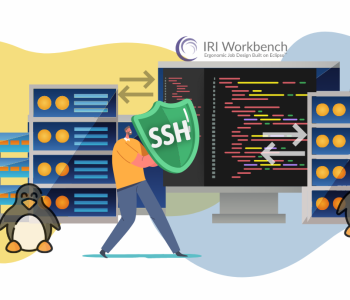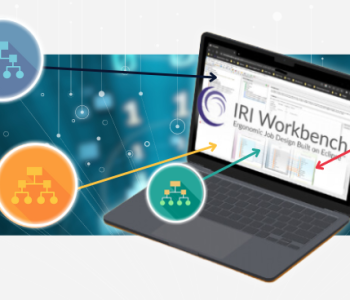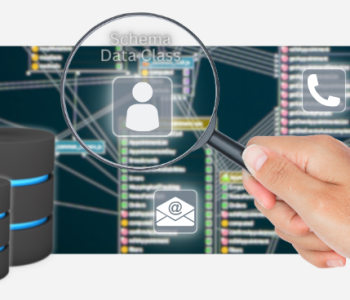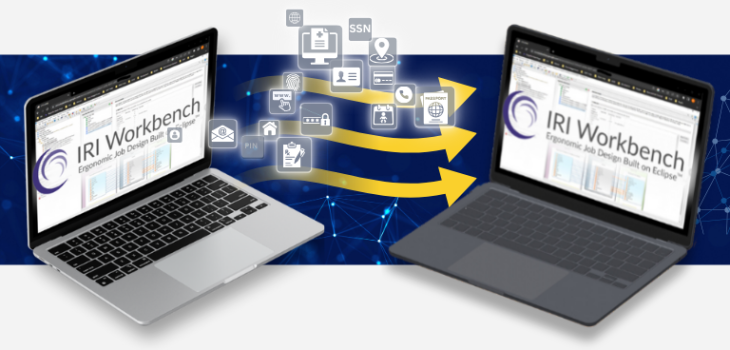
Importing Data Classes into the New IRI Workbench
Editor’s Note: This article addresses the migration of data class information between older and newer versions of the IRI Workbench graphical IDE for Voracity data management platform software and its component products. A forthcoming article will cover the use of another wizard in Workbench to import data-class related information in your RDB schema that you maintain in one or more spreadsheet-compatible files.
The latest versions of IRI Workbench built on JDK17 since late 2023 improved the way you interact with data classes and rules (for data masking, synthesis, migration, etc.) mapped to those classes. The new data classification and rule mapping infrastructure features several new ergonomic advantages, including:
- Faster performance during classification
- Direct integration with IRI DarkShield
- More capabilities for Data Classes
For those who have prior versions of IRI Workbench 9 – where data class attributes and rule associations are stored in Preferences – an import wizard is now available to automate class attribute migration so you can upgrade to a newer version without having to redefine all that.
More specifically, the latest version of IRI Workbench includes import wizards to allow you to reuse your data classes, rules, and the data class library (mappings). You can copy over any SortCL-based job scripts to the new Workbench, and they will continue to work like they did before.
Prerequisites
As Workbench uses JDBC connections to get metadata from your database(s), it is important to import your database connections from your old Workbench to the new one. This is explained later in this article.
Data classes are stored in Preferences inside your (existing/older) Workbench. In order to import the data classes to your new Workbench, you will need to export them from preferences to a file. The process is explained in the Export Data Classes section.
The new Workbench uses a Data Class Map library that contains the mapping information from classification which is similar to the data class library that is used by the old Workbench.
This means the data class library is no longer compatible with Workbench and will need to be imported into the data class map library. When you import the data class library, it has information that is dependent on the rules library and the data class list. You must import the data class list and rule library into the same project folder before trying to import the data class library.

For example, if you import your data class library file and you did not import the rules library then all of your mappings will not show up with any rules for your columns/fields.
Export Database Connections
For the database connections, there are two things we need to export. The first one is the JDBC connections shown in your Data Source Explorer view. The second one is the mapping between the JDBC connection and the ODBC connection currently stored in IRI preferences.
From the Data Source Explorer, select the export button. A dialog box will appear allowing you to select which database connections you want to export to a file:
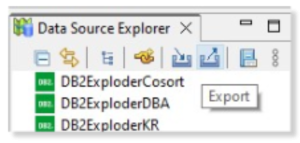
As shown in the dialog below, select the database connection(s) and then the browse button to navigate to the folder into which you wish to save the file. Name the file. At the bottom of the dialog box, you can also encrypt the file so your credentials are not stored in plain text.

Next, export the Database Connection Registry that is also stored in IRI Preferences; i.e., Window > Preferences > IRI > Connection Registry > Database Connection Here you will see your mappings between JDBC and ODBC connections. Click on the Export … button (lower right) to save these connections to a file.

Navigate to the folder into which you wish to save the file and click Save. The default name of this file is dataConnectionRegistry.xml.
Export Data Class List
In the older Workbench, go to the IRI Preferences menu where the data classes are stored (Data Classes and Groups). At the bottom right of the dialog, you will see the Export … button.
Your data classes will be saved into an XML file called dataClassList.xml. Remember where that file is stored so you can import the data classes into the new Workbench.

Import Database Connections
In the new Workbench, import the JDBC connections in the Data Source Explorer. To to that, click the import button and a dialog will appear allowing you to select the file containing your JDBC connections. Click OK to import the connections, and double-click on your database connections to ensure everything works correctly.

Next, let’s import your database connection registry. In IRI Preferences select the Connection Registry, then the Database Connection, and at the far right click the Import button.
Navigate to your dataConnectionRegistry.xml file and click OK. Now all your connections are ready in your new workbench.
Import Data Class List
Inside of the new Workbench, create a project folder, using the same process as before. The only difference is that an IRI library will automatically be created and contain both your data classes and the rules library within.

Double-click on the iriLibrary.dcrlib file to interact with the library. At the top left corner of the library, you will see some icons. Select the import wizard and a dialog will open to allow you to select which type of library you want to import (see the image below):

The import dialog lets you import either the data classes or the rules library. Click on the browse button and select the file that contains your data classes. The default name for the file is dataClassList.xml.

Click on OK and your data classes will appear in the IRI library. The imported data classes will have a description stating Imported Data Class.

Import Rules Library
To import the rules library, follow the same steps for importing the data classes except in the import dialog, select Rules Library up top. The default name for the file is iriLibrary.rules.
To make sure that your rules were imported, select the rules icon in the IRI library. There you will be able to see the rules and they will have a description stating Imported Rule. See the example image below:

Import Data Class Library
Now that both data classes and rules have been imported, we can now import the Data Class Library. Inside the Workbench select the file tab located in the top left corner. Click on the Import… option.

An import dialog will appear. Expand the IRI folder, select the Data Class Library, and click Next. If you already have an iriLibrary.dcmap file in your project folder you will not be able to continue.
Either delete that file or select another project folder. If you select another project folder, make sure that it contains the data classes and rules.

On the next page, you can select which project folder you want the data class map library to be in, and change the default name of the library if desired. Click Next when everything is correct.

On the next page, browse for the data class library file and click Finish. The default name for the file is iriLibrary.dataclass.
A new file called iriLibrary.dcmap will appear in your project folder. Double-click on this file to interact with the data class map library and verify that everything was imported correctly.


